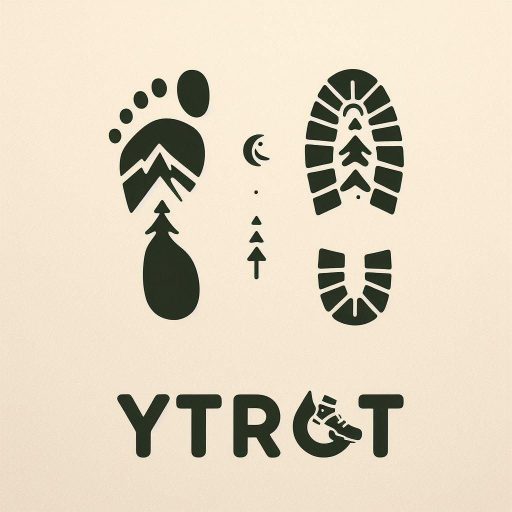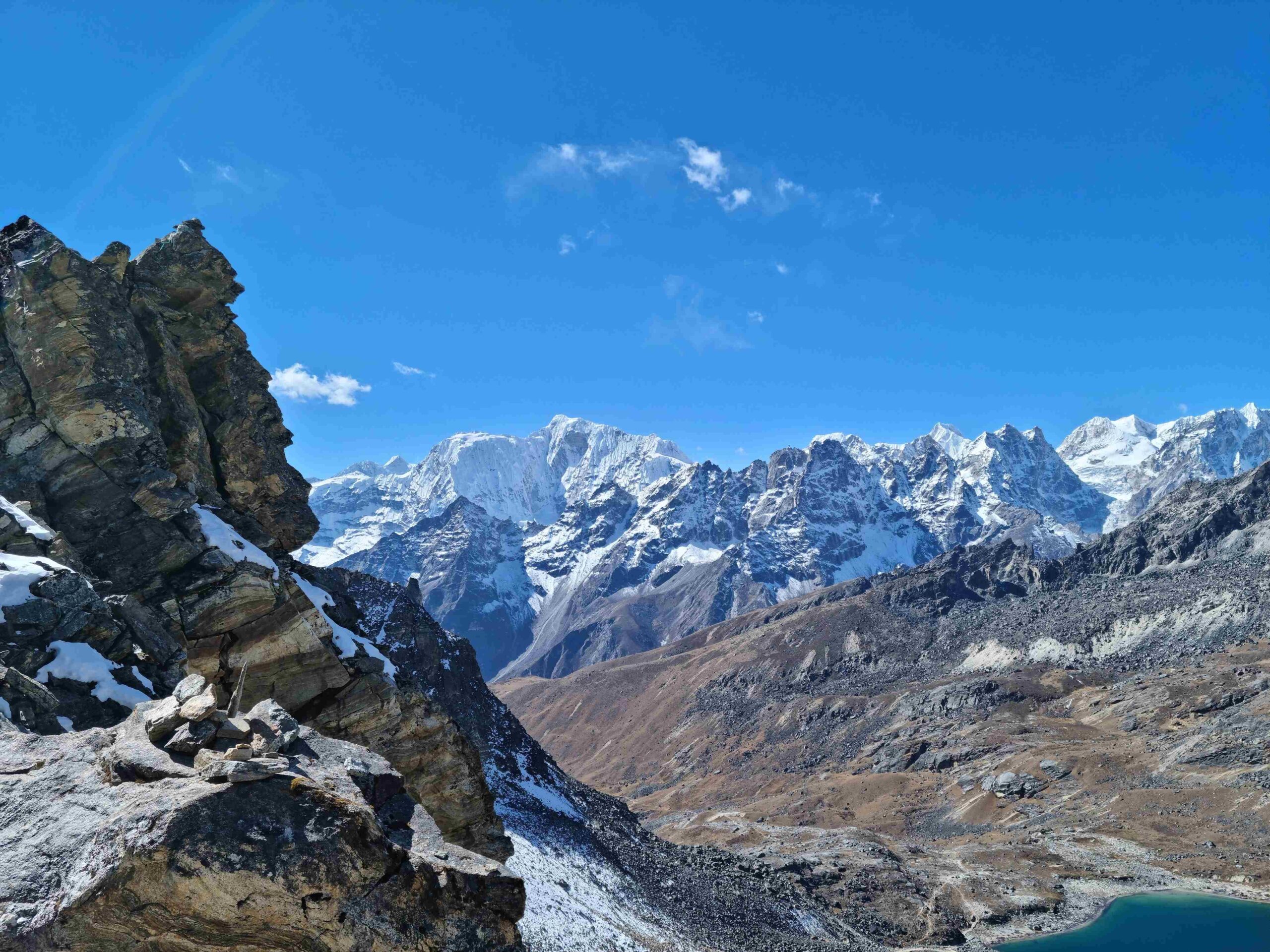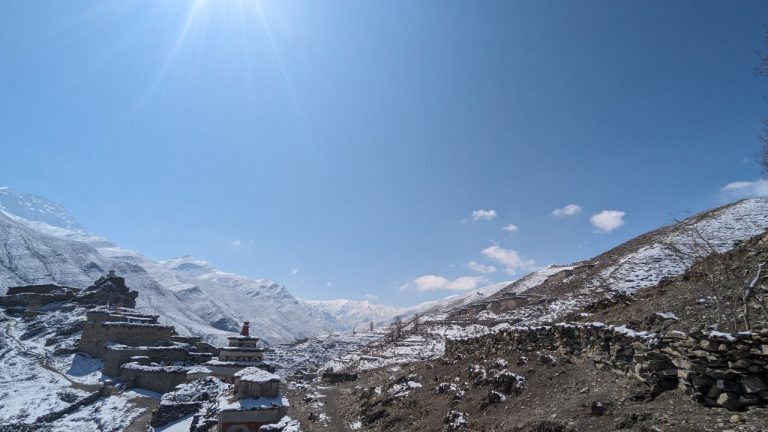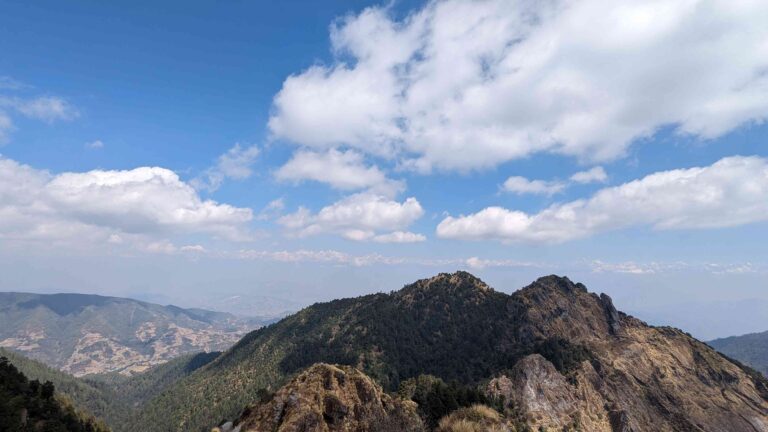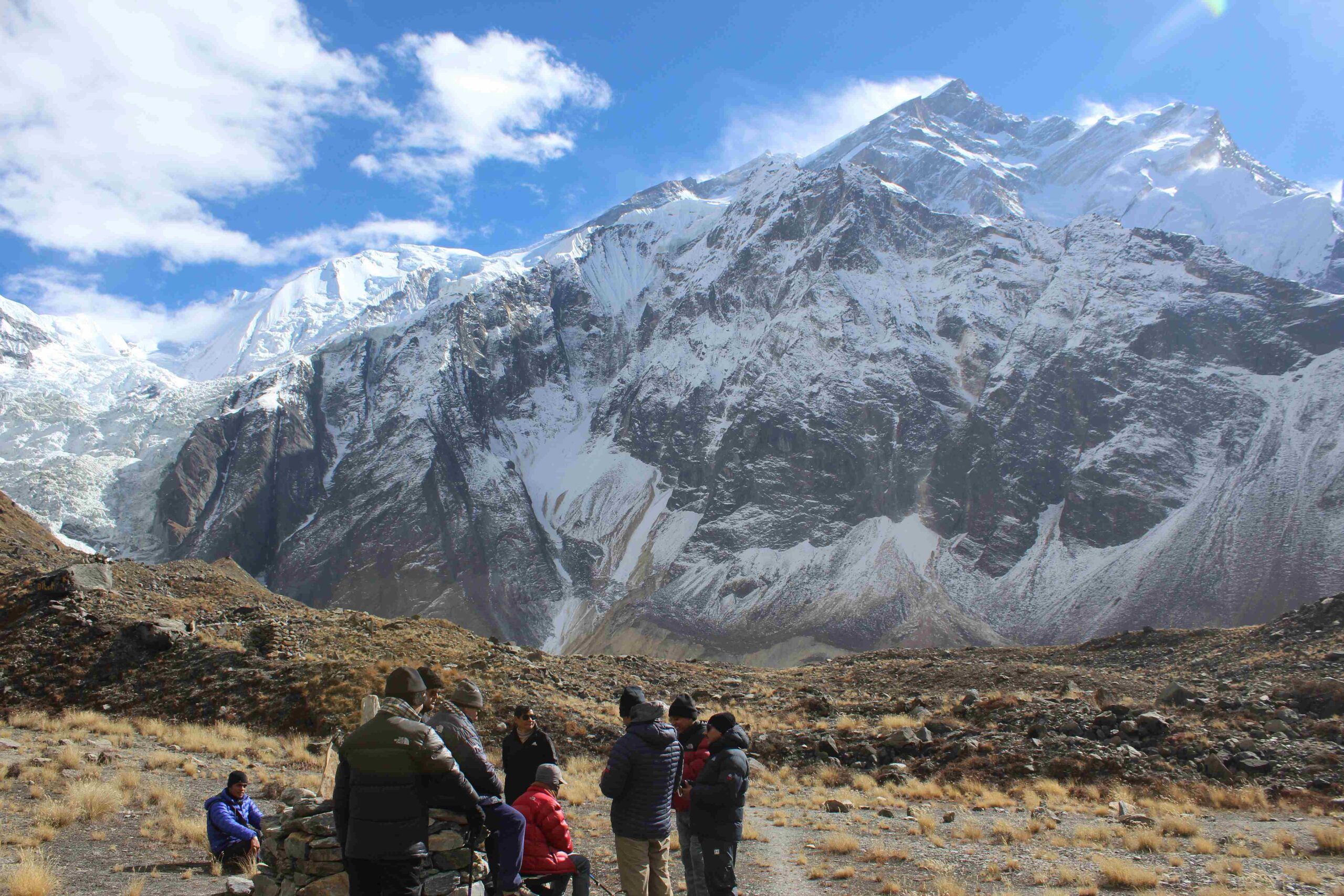The three passes trek in the Everest Khumbu region of Nepal is the ultimate trek for trekkers all over the world. Three passes trek encompasses Cho La Pass, Renjo La Pass and Kongma La Pass.
The Everest 3 Passes Trek goes through a secluded region of Sherpa villages in the high alpine region, as well as via exquisite Sherpa villages, Namche Bazaar, the magnificent Gokyo Lake, and the largest Khumbu Glacier.
The trek begins in the Dhote Kosi valley and traverses across the Renjo La pass before entering the Gokyo valley. Following that, the trail crosses the Cho La pass and enters the Dudh Kosi valley. It then goes to Everest base camp. When it reaches the Imja Khola valley, it turns around and descends once more, passing through the Kongma La pass. You will ascend Gokyo Ri, Kala Patthar, and Chukhung Ri, three great vantage points, en route.
Details of Three Passes Trek
| Name of the Trek | Everest Three Passes Trek |
| Trekking Region | Sagarmatha National Park, Everest and Khumbu Region |
| Trekking Difficulty | Very challenging; needs previous experience of trekking at high altitude |
| Number of Days | 20 days |
| Maximum Elevation | 5545 m (Kala Patthar) |
| Accommodation | Homestay, tea houses and local lodges |
Highlights of the Everest Three Pass Trek
- Crossing three challenging passes above 5000m: Renjo La, Cho La and Kongma La.
- Everest Circuit; circling round the most popular Khumbu region.
- Stunning views of mountains like Everest, Ama Dablam, Lobuche and more.
- Emerald lakes of Gokyo.
- Best vantage points for the panorama like Gokyo Ri, Kala Patthar and Chukhung Ri.
Short Itinerary of Everest Three Passes Trek
| Day | Activity | Altitude | Time |
| Day 1 | Arrival at Kathmandu | 1400m | – |
| Day 2 | Explore Kathmandu Valley and Preparation | 1400m | – |
| Day 3 | Mountain Flight to Lukla, Trek to Phakding | 2650m | 40 mins flight, 3 hours trek |
| Day 4 | Trek from Phakding to Namche Bazaar | 3440m | 6 hours trek |
| Day 5 | Acclimatization and Explore Namche Bazaar | – | – |
| Day 6 | Trek from Namche to Thame | 3750m | 6 hours trek |
| Day 7 | Trek from Thame to Lungden | 4500m | 7 hours trek |
| Day 8 | Trek from Lungden to Gokyo via Renjo La pass | Renjo La at 5446m, Gokyo at 4750m | 8 hours trek |
| Day 9 | Morning Ascent to Gokyo Ri at Rest at Gokyo | Gokyo Ri at 5440m | 2 hours trek |
| Day 10 | Trek from Gokyo to Thangnak | 4700m | 6 hours trek |
| Day 11 | Trek from Thangnak to Dzongla via Cho La Pass | Cho La at 5420m, Dzongla at 4855m | 7 hours trek |
| Day 12 | Trek from Dzongla to Gorakshep | 5180m | 8 hours trek |
| Day 13 | Trek to Everest Base Camp to Kala Patthar and back to Lobuche | Kala Patthar at 5555m, EBC at 5364m | 8 hours trek |
| Day 14 | Trek from Lobuche to Chhukung via Kongma La Pass | Kongma La at 5535m, Chhukung at 4930m | 8 hours trek |
| Day 15 | Trek from Chhukung to Tengboche | 3885m | 8 hours trek |
| Day 16 | Trek from Tengboche to Namche | 3440m | 7 hours trek |
| Day 17 | Trek from Namche to Lukla | 2850m | 7 hours trek |
| Day 18 | Fly Back to Kathmandu | 1400m | 40 minutes flight |
Permits for Three Passes Trek
You’ll need a Trekking Information Management Service (TIMS) permit, which costs $10, and a Sagarmatha National Park permit, which costs $30, just as for other treks in the Everest region. On the first day of your trek, you must pick up your Sagarmatha National Park permit in Monjo, a village checkpoint, and your TIMS permit in Kathmandu.
Detailed Itinerary of Three Passes Trek
Day 1: Arrival at Kathmandu
When you land at Kathmandu’s Tribhuvan International Airport, a shuttle will transport you to the hotel of your choice. You will gather additional details about the route and the trip. You can visit Thamel, Kathmandu’s main tourist destination, which boasts a thriving nightlife.
Day 2: Kathmandu Valley Exploration
The day off is dedicated to leisure and exploration. In terms of history and culture, the Kathmandu Valley is quite diversified. In the valley around Kathmandu, there are 8 UNESCO World Heritage Sites. You can see elements of the past Malla dynasty’s intricate architecture by visiting the historical palaces in Hanuman Dhoka Durbar Square, Patan Durbar Square, and Bhaktapur Durbar Square. Two of the most well-known religions in the world—Hinduism and Buddhism—converge to a single point in the Kathmandu Valley. One of the largest Hindu holy sites that must be visited by tourists is the PashupatiNath temple. Similarly, the two most important monasteries for Buddhists are Bouddhanath and Swambhunath, also known as the Monkey Temple, are also among major tourist attractions.
Day 3: Flight to Lukla, Trek to Phakding
The trek begins with a 35-minute scenic mountain flight from Kathmandu to Tenzing-Hillary Airport in Lukla (2840 m). The highest elevation airport in Nepal is located in Lukla. After signing up for an access card at the Lukla Tourism Checkpoint, your journey through the Himalayas will begin.
After that, we will go from Lukla to the Thado Koshi River and across a few suspension bridges to arrive in Phakding. We are going to spend the night at Phakding. We need to acclimatize and be ready for a long day of trekking tomorrow, so today’s stroll is only a moderate distance.
Day 4: Trek to Namche Bazaar
Today, we make our way into Sagarmatha National Park. On the way, we cross the stunning, captivating Toktok waterfall—not to be confused with tiktok.
We’ll be traversing a lot of suspension bridges, with the Edmund Hillary Suspension Bridge striking out among the rest. The Hillary Bridge is 140 meters long and 120 meters above the Dudh Koshi riverbed. After crossing this bridge, there is a difficult and steep ascent to Namche Bazaar, which is perched on a high ledge at the meeting point of the Dudh Khosi and its tributary, the Bhote Khosi.
Day 5: Rest and Explore Namche
It is extremely important to acclimate to the high altitude while trekking in the Himalayas, so use today to rest. Nevertheless, there are many things you may do, such as going to the Sherpa Museum or a nearby monastery or taking a lovely day hike to the Everest View Hotel for a drink and some snacks.
Day 6: Trek to Thame
We depart Namche Bazaar today and follow Bhote Koshi to Thame, passing through woods of rhododendron and pine. Trekking takes 4 to 5 hours from Namche bazaar to Thame village. You reach the village of Thame in Khumbu Nepal after passing through the villages of Thamo, Gumba, and Samde. Thame village sits at an elevation of 3750 meters above sea level.
In addition to offering some of the nicest mountain vistas, the stroll is also relatively tranquil. The historic Sherpa villages and trees are visible as you move through the pastures on your trek. Your guide will give an overview of the Sherpa village and their way of life.
Day 7: Trek to Lungden
About 10 kilometers separate Thame from Lungden, making it the perfect distance for a day trek. The Bhote Khosi valley trail rises gradually over a considerable distance. The crest of 6,000-meters-high mountains above Thame will be visible when you turn around. In contrast to other valleys in the Khumbu, not many trekkers can be found here. For individuals who dislike trekking or traveling in large groups, it is a popular option.
There are just three settlements in this valley. Consequently, you have the option of staying in Lungden (4380m) or Marulung (4150 m). It is preferable that we stay in Lungden because it is much closer to the all-day hike to the Renjo la Pass.
Day 8: Trek to Gokyo via. Renjo La Pass
The trail’s toughest hike is the one we have today. We move past the Renjo La Pass, one of the three high passes of the Everest zone, and leave Lungden behind as we advance to the Gokyo Lakes area.
You’ll go slowly but steadily as you make your way up a steep ascent that divides Lungden and Renjo La passes. When you arrive at the Renjo La Pass, you will be able to witness the magnificent views of lofty peaks including Mt. Cho Oyu (8463 m), Mt. Makalu (8463 m), and Mt. Everest (8848 m) (8201m). Additionally, you will witness Dudh Pokhari, the third largest of the five Gokyo Lakes, which is bordered by the settlement of Gokyo. You can then enter the Gokyo Valley as the trail gradually drops.
Day 9: Ascent Gokyo Ri and Rest at Gokyo
Gokyo Ri is a ridge that rises above the community on the emerald Gokyo lake’s northern shore. As a result, we ascend the hillside on a steep trail after leaving Gokyo. The mighty mountains of Cho Oyu, Gyachung Kang, Everest, and Lhotse will be gracing us as we climb. Also, you’ll gradually be able to see Makalu before arriving at the Gokyo Ri.
After taking in the panoramic view from the ridge for a while, descend to Gokyo.
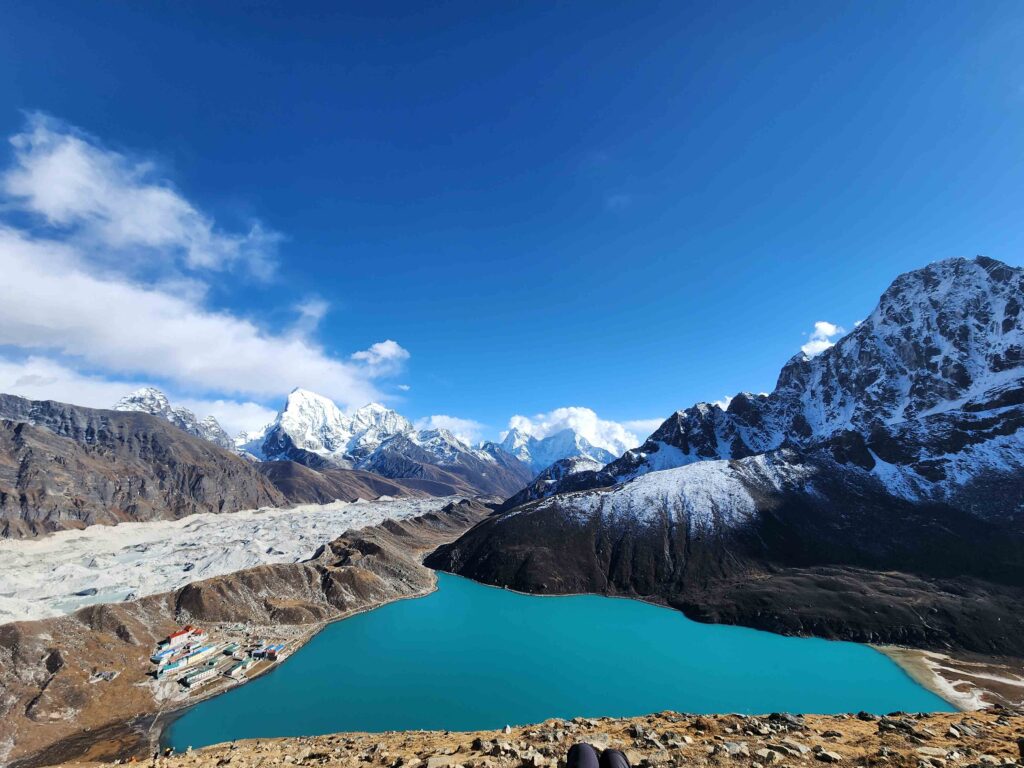
Day 10: Trek to Thangnak
The Ngozumpa Glacier track is rugged and has multiple ups and downs as we make our way through it. W e will be moving down the eastern glacier moraine as we stroll down the valley. We eventually reach the cluster of lodges known as Thangnak. This location is peaceful and ideal for crossing the Cho-La high pass.
Day 11: Trek to Dzongla via. Cho La Pass
Today’s walk will be challenging because it will be on rocky trails and through glacial moraines. You will be traveling via Cho La pass, the second pass of the Three-Pass Trek, which connects Thangnak and Dzongla.
Depending on the season, the pass may have ice or snow. You should therefore bring crampons or spikes with you. As a result, it is suggested that you bring crampons or spikes. You won’t risk hurting yourself by slipping on the ice.
Day 12: Trek to Gorakshep
Today, we continue on our journey with Mount EVerest getting closer by the steps. We will be descending alongside Chola Lake while sticking to the moraine. Memorial sculptures for the climbers who perished in this region will be visible as we move forward. In order to get to Lobuche, we will only take the Imja Khola Valley trails. We will converge with the Everest Base Camp trail at Lobuche which is about four hours walk from Dzongla.
Then, the trek continues after a brief rest stop at Lobuche by passing along the Khumbu Glacier’s lateral moraine till we reach Gorakshep. Gorakshep is the last settlement in the Everest region.
Day 13: Trek to EBC, Kala Patthar and Back to Lobuche
We’ll leave our possessions at Gorak Shep and ascend to Everest Base Camp in the north. We get up early in the morning and hike to Kala Patthar (5,555m), the well-known Everest View Point, to witness the dawn breaking at Everest. Since Kala Patthar provides a wonderful “full frontal” of Everest, it is on everyone’s plan. Despite not being a particularly difficult climb, the altitude makes it exhausting, so having fresh morning legs is helpful.
After spending some time in Kala Patthar to take in the sunrise over Mount Everest, we’ll descend to Gorak Shep for breakfast. We will hike back to Lobuche, our last destination for the day, after breakfast.
Day 14: Trek to Chhukung via. Kongma La Pass
You’ll be passing through the last of the three passes on your trek, Kongma La, today. Of the three passes, this one is regarded as the most challenging. You can see Lhotse, Lhotse Shar, Makalu, Baruntse, and Ama Dablam from the pass.
As we descend from the Kongma La pass, we enter the Chhukung Village on the Nigyang Khola Valley’s eastern side. There is no permanent dwelling here; instead, Sherpas use it as a yak pasture. The area has recently grown in reputation as a trekking peak, and hikers frequently visit Chhukung for acclimatization.
Day 15: Trek to Tengboche
We walk through Dingboche, a village renowned for its stone-walled potato fields, alpine pastures, and the Imja Khola valley as we drop before continuing on. We will eventually arrive in Pangboche Village, the valley’s year-round center of settlement, as we climb further, followed by Tengboche. Awe-inspiring views of recognizable peaks can be seen from the Tengboche viewpoint.
Day 16: Trek to Namche Bazaar
We pass through forests on the route to Namche Bazaar that are home to highland fauna including pheasants, musk deer, mountain goats, and even snow leopards. On the rocky slopes dotted with chortens and prayer flags, we shall be climbing. You can observe the summit of Everest and Lhotse’s backside from the trail.
Day 17: Trek to Lukla
The last day of our trek will take us back to Lukla. We will hike down a steep trail to the Hillary Suspension Bridge after breakfast. To get to Lukla, though, we continue going through a number of nearby settlements in the Dudh Koshi River Valley.
Day 18: Fly Back to Kathmandu
You have finished one of the most challenging yet thrilling treks in the Himalayas, if not the entire globe. Here, a flight return to Kathmandu puts an end to your journey.
Also see: Imja Tse (Island Peak) – YTROT
